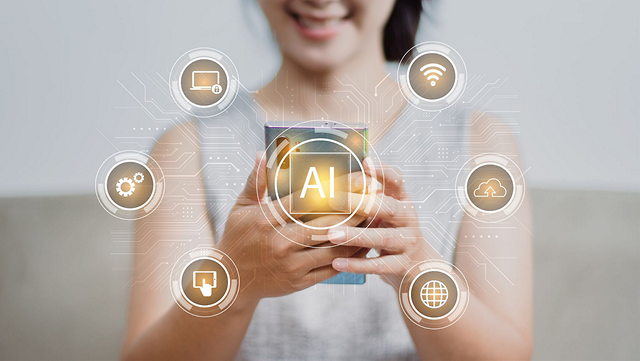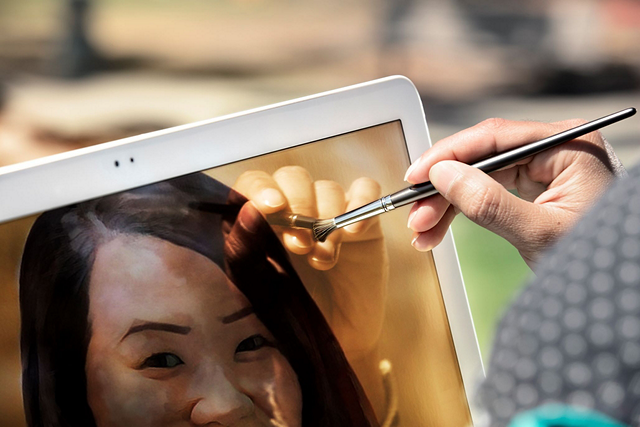Qualcomm executives reveal key trends in AI, consumer technology and more for the future.
Not that long ago, the banana-peel-and-beer-fueled DeLorean in “Back to the Future” was presented as comedy. Yet today, 10% of cars are electric-powered.1 Just a year ago, conversing with a computer in true natural language was science fiction, but we know now that the next generation will not know life without a personal AI assistant.
Generative AI was the undisputed game-changer across nearly every industry, and we will undoubtedly continue to feel its impact next year.
One of the reasons I love working at Qualcomm is that I am surrounded by inventors and business leaders who are developing and deploying the leading edge AI, high performance, low-power computing and connectivity technologies poised to deliver intelligent computing everywhere.
Exactly how generative AI and other technology trends will continue to play out next year, of course, no one can completely know. But as we close out 2023, I was interested in understanding what our executives here at Qualcomm thought would be the key trends of 2024. Here is what I heard.
- AI PCs will drive a laptop replacement “super cycle”
The PC market is set to experience a transformative shift in 2024, fueled by a “super cycle” of laptop replacements with the convergence of AI advancements for PCs.
Morgan Stanley predicts a drastic shift, with 40% of laptops due for replacement in 2024, expected to rise to 65% by 2025.2
“We anticipate a market-defining “super cycle” in the PC starting in 2024, where the need for new laptops and the advancement of AI will drive a new era of PCs,” says Qualcomm Technologies’ Senior Vice President and GM of Compute and Gaming, Kedar Kondap, adding,
“This innovation is not just an evolution in the PC market, but a revolution, driving the demand for AI PCs forward and reshaping the computing experience for businesses and consumers into the new year.”
You only have to look at what Microsoft is doing to know that these Intelligent PC and AI assistants, like Copilot, are coming.
Unapologetic plug/reminder: In October, at Snapdragon Summit the likes of Microsoft, HP, Lenovo and Dell stood with us as we announced how we’re enabling the AI PC with Snapdragon X Elite, built to take on AI tasks.
A girl holds her smartphone that houses generative AI processing on device, instead of the cloud.
- Generative AI will move from the cloud to personal devices
The generative AI conversation in 2023 was predominantly about the cloud, but privacy, latency and cost will increasingly be choke points that on-device AI capabilities can help solve.
“As generative AI becomes more integrated in our lives, our personal devices like our smartphones, PCs, vehicles, and even IoT devices will become the hubs for multi-modal generative AI models,” noted Qualcomm Technologies’ Senior Vice President & General Manager of Technology Planning & Edge Solutions, Durga Malladi.
Not only does it make sense to do many AI tasks on-device, but it also broadens the access of these awesome capabilities, for both the consumer and enterprises.
“This transition will usher in next-level privacy-focused, personalized AI experiences to consumers and enterprises, and cut down cloud costs for developers,” added Malladi. “With large generative AI multi-modal models running on devices, the shift from cloud-based to hybrid or on-device AI is inevitable.”
- Your smartphone will become even more indispensable
As generative AI capabilities are brought onto the smartphone, personal AI assistants will evolve into indispensable companions, continuously learning from our daily lives to provide tailored experiences.
“Smartphones, our most personal devices, are poised to leverage multi-modal generative AI models and combine on-device sensor data,” said Qualcomm Technologies’ Senior Vice President & General Manager of Mobile Handset, Chris Patrick. He added,
“Your on-device AI assistant will evolve from generic responses to personalized, informative outcomes.”
Applications leveraging large language models (LLMs) and visual models will use sensor data such as health, location and hyperlocal information to deliver personalized, meaningful content.
Patrick added, “By using different modalities, these AI assistants will enable natural engagement and be able to process and generate text, voice, images and even videos, solely on-device. This will bring next-level user experience to the mainstream while addressing the escalating costs of cloud-based AI.”
Another unapologetic plug/reminder: Also at Snapdragon Summit, we demonstrated on-device personalization on our new Snapdragon 8 Gen 3 to enable this market need.
- Creatives will get more creative
Deeper integration of AI in the creative and marketing process is inevitable.
“Generative AI is changing how we learn, how we play and how we work,” said Qualcomm Incorporated’s Chief Marketing Officer, Don McGuire, adding, “Not only is Qualcomm one of the largest companies enabling this technology, but as the CMO, I’m deploying the tools throughout the marketing organization.
“As a result, we’re seeing an increase in productivity level, time-to-market and efficiency, so the team can spend more time on strategy and creative collaboration, and less on time-consuming, repetitive tasks.
“It’s not about replacing people but augmenting and enhancing their capabilities.”
With access to vast amounts of data, generative AI can make suggestions and provide valuable insights. It enables marketers to target specific audiences more effectively and gives us the ability to produce highly personalized content across various mediums.
- Consumers will push for open multi-device ecosystems
The adoption of open ecosystems will empower consumers with the freedom to select the best devices from a variety of brands that fit their specific needs.
This increased interoperability will drive innovation and enhance consumer experiences as brands compete on a level playing field, striving to outperform one another and deliver superior products.
“Consumers will be the driving force behind device makers opening their ecosystems, demanding enhanced communication and functionality across devices,”
says Qualcomm Technologies’ Senior Vice President & General Manager, Mobile, Compute & XR, Alex Katouzian.
“With the recent announcement of Apple’s rich communication services messaging integration, and technologies like Link to Windows and Snapdragon Seamless experiences becoming more widespread, there’s a growing push for interoperability across brands and platforms,” he adds. “This shift towards open ecosystems will empower consumers with greater choice, enabling them to select the best device for their specific needs.”
- Mixed Reality will redefine your world
In 2024, mixed reality, virtual reality and extended reality (XR) will make their way into the mainstream as technologies once reserved for enthusiasts become integrated into consumer products.
Qualcomm Technologies’ Vice President and GM of XR Hugo Swart says,
“XR is entering a stage of rapid progress, thanks to the widespread adoption of mixed reality capabilities, smaller devices and the advancement of spatial computing.”
Affordable hardware options, such as Meta’s Quest 3 and Ray Ban Meta, are just the beginning of what’s to come.
Generative AI will play a crucial role in improving and scaling XR experiences, democratizing three-dimensional (3D) content generation through new tools and creating more realistic and engaging virtual environments.
Voice interfaces powered by generative AI will provide a natural and intuitive way to interact with XR devices, while personal assistants and lifelike 3D avatars, also powered by generative AI, will become increasingly prevalent in the XR space.










